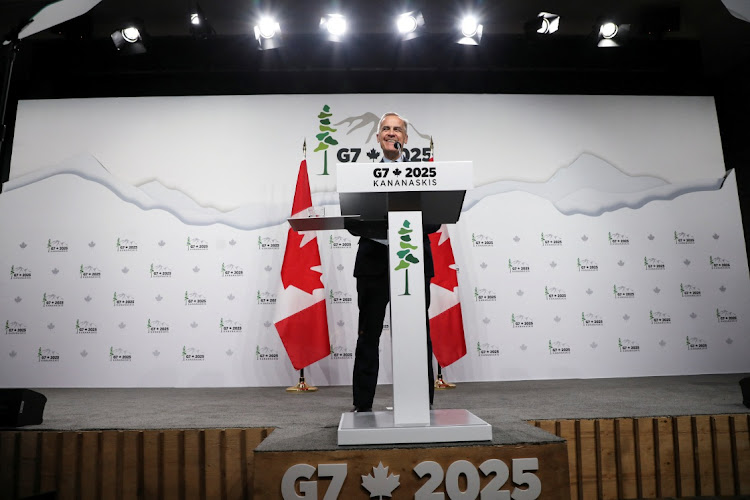G7 a significant moment for multilateral co-operation

As SA prepares to host the upcoming G20 there may be valuable lessons to draw from this renewed momentum
The G7 Summit held in Canada last week marked a significant moment for multilateral co-operation — arguably the most consequential in recent years.
As SA prepares to host the upcoming G20 there may be valuable lessons to draw from this renewed momentum. While multilateralism may not currently be flavour of the month for the US, the summit demonstrated strong alignment among G7 members on issues related to critical minerals and strategic technology sectors.
The draft G7 agreement noted that “nonmarket policies and practices in the critical minerals sector threaten our ability to acquire many critical minerals... Recognising this threat to our economies, as well as various other risks to the resilience of our critical minerals supply chains, we will work together and with partners beyond.”
Though not explicitly named, it is widely understood that these “nonmarket policies and practices” refer to China. While some G20 members are nonaligned or lean towards Beijing, China’s market distortions ultimately undermine the broader stability and competitiveness of G20 economies. Here’s why that matters:
Between May 2022 and May 2025 cobalt prices declined by 59.5%, falling from $82,000 per metric ton to $33,250. In 2023, Jervois commenced operations at the only cobalt mine in the US, located in Idaho, but was forced to suspend production within the same year due to the sharp downturn in market prices. Just this week the DRC extended its cobalt export ban — not to promote local processing but to curb the market oversupply caused by excessive output from Chinese-owned mines in the country and to drive prices back up.
Nickel experienced an even steeper decline, with prices falling 73.1% — from $48,241 per ton in March 2022 to $13,847 per ton by May 2025. This price collapse led to significant supply side contraction: BHP closed its Nickel West operations and its West Musgrave project in Australia, while Glencore ceased operations at its Koniambo Nickel SAS facility in New Caledonia, all citing financial infeasibility. Meanwhile, Chinese companies operating in Indonesia have in effect consolidated a dominant position in global nickel supply.
Lithium prices have also plummeted, dropping 86.8% from $68,114 per ton in December 2022 to below $10,000 by June 2025. Prices for neodymium-praseodymium oxide — the key rare earth material used in neodymium-iron-boron magnets — have fallen below $60/kg. At this level nearly half of the anticipated supply from non-Chinese sources would become economically nonviable by 2030. In fact, only eight rare earth projects outside China are currently expected to break even at or below this price threshold.
The environment of low prices is detrimental for SA, which was one of the top destinations of rare earths exploration investment in 2024. Any effective G20 outcome on critical minerals must address both supply and demand. Policies that focus solely on expanding supply risk worsening market imbalances, placing further downward pressure on prices in the absence of corresponding demand growth. A balanced approach is essential to ensure market stability and long-term investment viability.
Accordingly, any measures aimed at expanding mineral production and processing should be accompanied by policies that stimulate downstream demand — particularly in strategic sectors such as automotive manufacturing, semiconductors, defence technologies and energy infrastructure.
Otherwise, the G20 risks implementing policies that fail to catalyse meaningful market responses. Persistently low prices, significant market distortions and an already volatile geopolitical landscape undermine the effectiveness of supply side interventions in the absence of strong market incentives. It’s no surprise that the G7’s agreement focuses on creating a fair market for minerals, collaboratively.